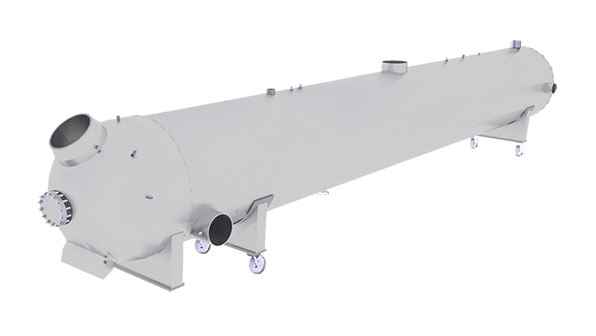Feedwater heaters are shell-and-tube type heat exchangers designed to preheat boiler feedwater. The bleed-off steam from the high-pressure turbines is on the shell side, and it heats the feed water on the tube side.
The heating process, performed via the extraction of steam, is considered to be “regenerative.”
Feedwater heaters are an integral portion of a power plant’s thermodynamic cycle. Low-pressure feedwater heaters are placed between the condenser and deaerator, and high-pressure feedwater heaters are placed between the deaerator and steam generator.
The number of low-pressure and high-pressure feedwater heaters needed is determined by cycle optimization, as there are multiple stages of feedwater heating. Each stage corresponds to a turbine extraction point. These extraction points occur at various stages of the expansion of steam through the turbines. The presence of the feedwater heaters in the cycle enhances the thermal efficiency of the power plant; the greater the number of extraction stages, the lower the amount of thermal energy required to generate a given amount of electrical energy. A beneficial byproduct of the energy extracted by the heaters is a reduced rate of energy unnecessarily ejected into the environment.

